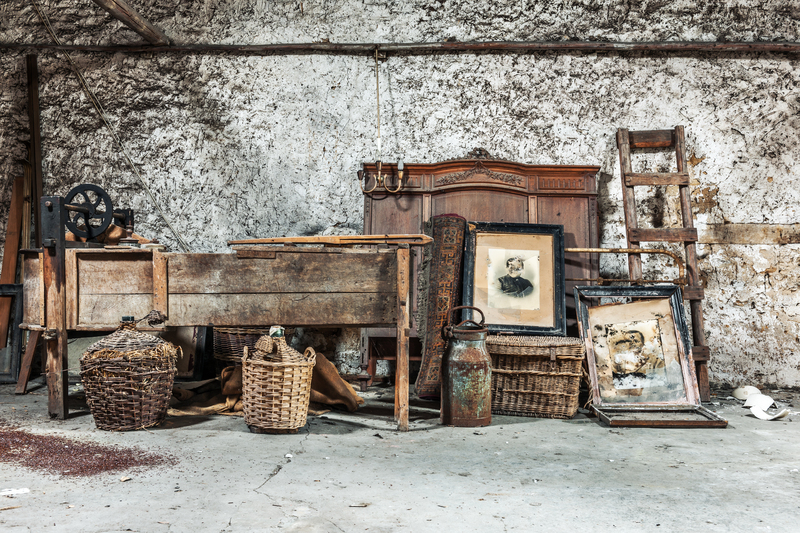Long-Term Sofa Preservation: Expert Storage Tips
A sofa is often the centerpiece of any living room--a place where families gather, friends sit for conversations, and cherished memories are made. When it comes time to put your sofa in storage, whether due to a move, a home renovation, or downsizing, it's crucial to ensure proper care to maintain its comfort, style, and longevity. Long-term sofa preservation isn't just about throwing a cover over your couch and calling it a day; it demands careful planning and the right techniques. In this comprehensive guide, you'll discover everything you need to know about expert storage tips for sofas, so you can take the guesswork out of long-term furniture storage.

Why Proper Sofa Storage Matters
Before you dive into sofa storage solutions, understanding the importance of proper storage is key. Sofas are made of various materials--including fabric, leather, wood, and metal springs. Each material can be negatively affected by time, temperature changes, pests, moisture, and improper handling.
- Upholstery can become musty, stained, or torn if exposed to damp conditions or rough handling.
- Leather can dry out, crack, or become discolored if not conditioned and protected.
- Wooden frames are susceptible to warping, shrinking, or splitting if moisture manages to enter the storage environment.
- Metal components risk rusting if humidity isn't properly controlled.
Expert sofa storage techniques help protect your investment and ensure you're not faced with unpleasant surprises when it's time to bring your sofa back into use.
Planning for Long-Term Sofa Storage
1. Find the Right Storage Environment
Where you store your sofa matters just as much as how you store it. Opting for the correct storage environment is the first and most crucial step in preserving your couch for the long term.
- Climate-Controlled Units: These are the best choice for sofa preservation. They maintain a stable temperature and humidity level, reducing the risk of mold, mildew, warping, and cracking.
- Clean, Dry Spaces: Avoid areas prone to leaks, flooding, or high humidity. Basements and attics typically aren't ideal due to strong temperature fluctuations.
- Off-the-Floor Placement: If a storage facility isn't available, aim to position your sofa on raised pallets or platforms to avoid contact with ground moisture.
2. Thorough Cleaning Before Storage
Cleaning your couch prior to storage is an essential step in the long-term sofa protection process. Leftover crumbs, stains, or moisture can lead to permanent damage.
- Vacuum Upholstery: Use a vacuum with an upholstery attachment to remove dust, pet hair, and debris between cushions and crevices.
- Spot Clean: Use manufacturer-recommended cleaning agents to remove stains. Always do a patch test first to prevent discoloration.
- Condition Leather Surfaces: Use specialty leather cleaners or conditioners to help prevent cracking and drying during storage.
- Allow to Dry Completely: Any moisture left behind can encourage mold or mildew growth.
3. Disassemble When Possible
Disassembly not only makes transport and storage easier but also helps protect your sofa from unnecessary stress and damage.
- Remove Cushions and Pillows: Store them separately in breathable bags.
- Take Off Legs or Feet: Most modern sofas feature removable legs that can be unscrewed. This reduces accidental stress on joints and fittings.
- Protect All Hardware: Place screws, bolts, and other hardware in a labeled zip-lock bag for easy reassembly.
4. Wrap and Protect the Sofa
Protecting your sofa from dust, dirt, and pests is a top priority for long-term preservation.
- Breathable Covers: Choose covers made from cotton or canvas instead of plastic. Plastic can trap moisture, causing mold and mildew problems.
- Old Sheets or Blankets: These provide a layer of protection from scuffs and scratches during moving and storage.
- Avoid Direct Contact with Newspaper: The ink can bleed onto upholstery or wood, resulting in tough-to-remove stains.
Choosing the Best Storage Solutions for Sofas
Climate-Controlled Storage Facilities
Investing in a climate-controlled storage unit is one of the smartest moves for those seeking expert sofa preservation. These units keep your furniture at the optimal temperature and humidity, helping prevent damage from moisture, pests, and pollutants.
On-Site Home Storage
For those who must keep their sofa at home, choose a spot that is:
- Away from direct sunlight to prevent fading
- Free from high humidity or excessive dryness
- Safe from pets and children who might unintentionally cause damage
Even at home, never store your sofa in damp basements or garages, as these areas often have poor air quality and uncontrolled humidity.
How to Protect Your Sofa During Storage
1. Positioning and Placement
The way you place your sofa in storage can have a lasting effect on its frame and fabric.
- Keep Upright: Always store the sofa in its normal, upright position--never on its side or back. This preserves the shape of the frame and cushions.
- Avoid Overstacking: Never place heavy boxes or furniture on top of your sofa. Pressure can deform cushions and lead to irreparable dents.
- Allow for Airflow: Leave some space between the sofa and other items for improved air circulation, helping reduce the chance of mildew buildup.
2. Regular Inspection
Even in long-term storage, check your sofa every few months for signs of pest infestation, moisture, or mold.
- Look for Water Damage: Feel the fabric and frame for damp spots or mildew smell.
- Check for Pests: Look for droppings or chew marks that indicate mice or insects.
- Refresh Covers: If dust or odor accumulates, launder covers and replace them as needed.
3. Pest Deterrents
Unseen pests can cause major damage to a stored sofa. Take preventive measures:
- Cedar Blocks or Sachets: Place these near your sofa to deter moths and insects naturally.
- Pest Repellent Sprays: Use non-toxic sprays around (but not directly on) your sofa, especially in non-climate-controlled units.
- Seal Entry Points: If storing at home, make sure windows, doors, and vents are fully sealed.
Special Sofa Storage Considerations by Material
Fabric Sofas
Fabric upholstery can trap dust and moisture. Opt for breathable fabric covers and allow for airflow. Never wrap in plastic for long durations as this can foster humidity buildup.
- Deodorize: Use a fabric-safe deodorizer before storing to avoid musty smells.
- Layer with Sheets: Multiple layers of cotton sheets provide extra defense against dust.
Leather Sofas
Preserving leather requires extra care. Condition surfaces to keep them supple and store away from fluctuating temperatures. Humidity and dryness are both harmful, causing the leather to either crack or mildew.
- Condition: Use a professional leather conditioner just before storage.
- Wrap Loosely: Leather needs to breathe, so use thin cloth covers.
Wooden Frames and Trim
Protect wood from humidity swings and accidental knocks.
- Polish: Apply a furniture-safe wood polish or wax before storage for added moisture resistance.
- Prevent Direct Contact: Never let wooden parts rest against rough surfaces that may scratch the finish.
Additional Sofa Storage Tips from the Experts
- Use Moisture Absorbers: Place silica gel packets or moisture absorbers near your sofa to keep humidity levels balanced.
- Label Sofa Parts: If you disassemble, label each piece for easier reassembly later.
- Photograph: Before taking apart your couch, snap pictures to aid in putting it back together.
- Don't Forget Documentation: Keep all instruction manuals, warranties, or service records with your sofa's hardware bag.
- Maintain Insurance: Consider insuring your stored sofa, especially if it's valuable or antique.
Bringing Your Sofa Out of Storage: Reintroduction Best Practices
When it's finally time to take your sofa out of storage, proper re-acclimation is vital to protect the materials and finish.
- Carefully Unwrap: Remove coverings gently to avoid scratches or tears.
- Inspect for Damage: Check thoroughly for pests, stains, warping, or any odor that could indicate mildew.
- Clean and Ventilate: Give your sofa a careful cleaning and allow it to air out in a fresh, ventilated space before use.
- Recondition: For leather, reapply conditioner; for wood, touch up with polish as needed.

Frequently Asked Questions (FAQs) About Sofa Storage
How long can a sofa be stored safely?
With the right conditions and care, a sofa can be stored for several years without damage. However, the key to long-term sofa preservation lies in regular inspection, climate control, and protective covering.
Is it safe to store a sofa in a garage or basement?
Generally, no. Garages and basements are prone to humidity, dust, and pests--putting your sofa at risk for mold and deterioration. Choose a clean, climate-controlled area instead.
Can I stack items on top of my stored sofa?
Never stack heavy objects on your sofa, as this can deform cushions and put undue stress on the frame.
Should sofa cushions be stored separately?
Yes. Store cushions and pillows separately--ideally in breathable bags or containers. This prevents flattening and helps maintain their shape.
Conclusion: Make Your Sofa Last for Years
Your sofa represents years of comfort and memories, and it's worthy of being treated with care. A little extra effort in planning, cleaning, and choosing the right environment can make all the difference in your sofa's future usability. By employing these expert storage tips, incorporating climate control, thorough cleaning, careful wrapping, and periodic inspection, you can rest assured that your sofa will stay in pristine condition during any long period of storage.
Whether you're putting away a cherished family heirloom or a new designer centerpiece, follow these sofa preservation tactics and storage solutions to protect your investment--ensuring it's ready to welcome you home whenever you need it again.






